Today’s Current Affairs: 17th September 2025 for UPSC IAS exams, State PSC exams, SSC CGL, State SSC, RRB, Railways, Banking Exam & IBPS, etc
Table of Contents
Penna River:
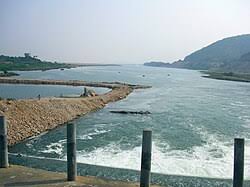
Eighteen youngsters stranded in the floodwaters of the Penna River in the Nellore district of Andhra Pradesh recently were rescued after a seven-hour operation.
- The Penna River, also known as Pennar, Pinakini, or Penneru, is a river in southern India that flows through the states of Karnataka and Andhra Pradesh.
- It rises in the Nandi Hills, an upland region on the Deccan plateau, in Karnataka’s Chikkaballapur district.
- It flows north into Andhra Pradesh state and turns east and then southeast.
- After passage through a gap in the Eastern Ghats range, it again bends east toward the Coromandel Coast, emptying into the Bay of Bengal near the Nellore district.
- It has a total length of about 597 km.
- The river basin lies in the rain shadow region of the Eastern Ghats.
- The river is seasonal, becoming a torrent after the rains and a thin stream during dry periods.
- The Penna River has several tributaries, most of which are seasonal.
- Major ones include the Chitravati, Papagni, Cheyyeru, and Kunderu
- The Penna River is crucial to agriculture in parts of Andhra Pradesh, particularly the drought-stricken Rayalaseema region.
- Several irrigation projects, such as the Somasila, Mylavaram, and Gandikota projects, have been constructed to use the river’s waters for farming and drinking purposes.
Birhor Tribe:
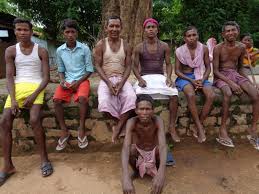
Around 550 residents, mostly belonging to the Birhor tribe, of Fulwariya hamlet in Koderma district would soon receive electricity supply, ending nearly eight decades of darkness.
- The Birhor are a forest-dependent semi-nomadic tribal community concentrated in the eastern central Indian state of Jharkhand.
- Some of them are also found in Chhattisgarh, Odisha, and West Bengal.
- The Birhor community is one of eight Particularly Vulnerable Tribal Groups (PVTGs) identified in Jharkhand.
- The term “Birhor” is derived from the words “Bi”, meaning “Jungle”, and “hor”, meaning “man”; thus, it means “the man living in Jungle” or “people of Jungle”.
- They belong to the Porto-Australoid stock.
- The Birhor follow a mixture of animism and Hinduism.
- The Birhor tribes have their own language, known as Birhor, which belongs to the Munda group of languages of the Austroasiatic language family.
- Their language has similarities with the Santali, Mundari, and Ho languages.
- However, due to increased contact with other communities and the influence of mainstream languages, many Birhor people are bilingual or trilingual, with proficiency in Hindi, Bengali, or other regional languages.
- The Birhors are of short stature, with long heads, wavy hair, and broad nose.
- They claim they have descended from the Sun and believe that the Kharwars, who also trace their descent from the Sun, are their brothers.
- Ethnologically, they are akin to the Santals, Mundas, and Hos.
- They typically live in small, close-knit communities, and their social organization is primarily based on kinship ties.
- The tribe is divided into several clans, and each clan has its own leader who plays a crucial role in resolving disputes and maintaining social harmony within the community.
- They live in small settlements in the forest or on the outskirts of villages.
- The temporary Birhor settlements are known as tandas or bands.
- These consist of at least half a dozen huts of conical shape, erected with leaves and branches.
- Birhor society is characterized by a strong sense of community, cooperation, and mutual support.
- The “primitive subsistence economy” of the Birhors has been based on nomadic gathering and hunting, particularly for monkeys.
- They make ropes out of the fibres of a particular species of vine, which they sell in the markets of the nearby agricultural people.
- Some of them have settled into stable agriculture.
- According to socio-economic standing, the Birhors are classified into two groups. While the wandering Birhors are called Uthlus, the settled Birhors are called Janghis.
- The Birhor tribe has a rich knowledge of traditional medicine and uses various medicinal plants found in the forest for treating common ailments.
Hand, Foot, and Mouth Disease : Spreading Rapidly

A viral infection known as Hand, Foot, and Mouth Disease (HFMD) is spreading rapidly among children across Delhi and neighbouring Haryana, prompting health experts and schools to issue advisories.
- Hand, Foot, and Mouth Disease (HFMD) is a very contagious illness caused by a virus.
- The disease gets its name from the blister-like rash that forms on your child’s hands and feet and painful sores that develop in their mouth.
- The rash can actually appear anywhere on their body, including their chest, back, arms, legs, genitals, and buttocks.
- Infants and children younger than 5 are most likely to get HFMD. It is extremely uncommon in adults; however, it is still a possibility.
- It tends to spread quickly among children in daycare and school
- Because several viruses can cause the disease, it’s possible to get HFMD multiple times.
- It is often confused with foot-and-mouth (also called hoof-and-mouth) disease, a disease of cattle, sheep, and swine; however, the two diseases are not related—they are caused by different viruses.
- Humans do not get the animal disease, and animals do not get the human disease.
- It easily spreads through contact with unwashed hands, feces, saliva , mucus from the nose, or fluid from the blisters.
- Symptoms: Fever, Sore throat, Painful mouth sores that blister, Rash commonly found on the hands and feet,Complications from HFMD are rare.
- There’s no cure for HFM and no vaccine to prevent it.
- Most people get better on their own in 7 to 10 days with minimal or no medical treatment.
- However, it can take children younger than 2 years old a little longer for their bodies to clear the virus.
Almatti Dam:

To set the stage for the implementation of the languishing Upper Krishna Project (UKP) phase III, the Karnataka Cabinet recently gave clearance for the acquisition of 1,33,867 lakh acres of land to facilitate the increase of Almatti dam’s height from the present 519.16 metres to 524.256 metres.
- Almatti Dam is a hydroelectric project on the Krishna River in North Karnataka.
- The dam was completed in July 2005.
- It was built with the primary objectives of supplying irrigation and potable water to adjacent regions, generating hydroelectric energy, and managing flood risks in the area.
- The annual electric output of the dam is 713,000,000 kilowatts (KW).
- The dam holds a gross water storage capacity of 123.08 TMC at 519 meters MSL.
- Standing at a height of 52.5 meters and extending 3.5 kilometers in length, Almatti Dam serves as the principal reservoir of the Upper Krishna Irrigation Project; the 290 MW power station is located on the right side of the Almatti Dam.
- The facility uses vertical Kaplan turbines: five 55 MW generators and one 15 MW generator.
- Two separate facilities, namely, Almatti 1 Powerhouse and Almatti II Powerhouse, each separated by distance, do provide power generation capabilities.
- After generating power, water is released into the Narayanpur reservoir to meet the irrigation requirements downstream.
- 77 acres surrounding Almatti Dam have been developed into meticulously maintained gardens, including the Japanese Garden, Rock Garden, Mughal Garden, Gopal Krishna Garden, and Lavakush Garden.
Saunders’s Tern:
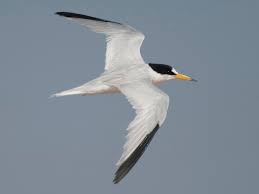
Saunders’s Tern was sighted at Adyar Estuary in Chennai.
- Saunders’s Tern is a species of bird in the family Laridae.
- Saunders’s terns (Sternula saundersi) are a small, ground-nesting marine bird species.
- It is sparsely resident along the shores of the north-western Indian Ocean.
- It breeds in the Red Sea and Persian Gulf to islands between India and Sri Lanka; apparently winters mainly Seychelles to Maldives and Cocos (Keeling) Island.
- This species occupies a variety of coastal areas: estuaries, shallow tropical and subtropical inshore waters, tidal lagoons, and harbors.
- Its diet comprises many kinds of marine animals, such as small fish, crustaceans, and mollusks.
- It nests on the ground up to 2 km inland on uncovered sandy sites, shingles, or dried mud.
- The breeding season for the Saunders’s tern is between March and June.
- Conservation Status: Least Concern (IUCN Red List).
- Adyar estuary is formed by the Adyar River at the point at which the river meets the Bay of Bengal.
- It lies between Santhome beach in the north and Elliots Beach in the south.
Frontier 50 Initiative:
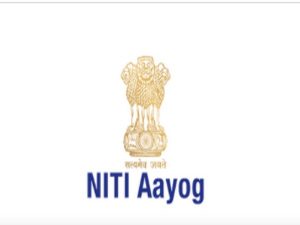
The NITI Aayog launched the Frontier 50 Initiative to amplify grassroots adoption of technology and scale impact creation.
- Frontier 50 Initiative will support 50 Aspirational Districts / Blocks to pick use cases from the Repository and deploy those frontier technologies that have potential to accelerate saturation of services across ADP/ABP themes.
- Launched by: NITI Aayog under its Frontier Tech Hub.
- The Frontier Tech Repository showcases 200+ impact stories from across India in four sectors – Agriculture, Healthcare, Education, and National Security.
- It brings to life how states and startups are deploying technology with the purpose to transform livelihoods.
- NITI Frontier Tech Hub has been established to anticipate mega technology shifts and chart India’s readiness to unlock their potential for inclusive growth, supply chain resilience, and national security.
- It convenes leading experts across government, industry, and academia to assess frontier technologies—such as AI, quantum, and biotechnology.
- It evaluates AI, quantum, and biotechnology opportunities and risks for India, and designs strategies to harness them for Viksit Bharat@2047.
Bureau of Indian Standards:
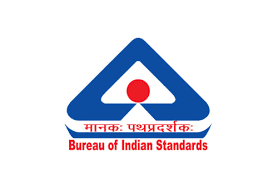
The Bureau of Indian Standards (BIS) has issued as many as 84 Quality Control Orders (QCOs) based on the recommendations of various ministries and departments.
- It is the National Standard Body of India established under the BIS Act 2016.
- It was established for the harmonious development of the activities of standardization, marking, and quality certification of goods and for matters connected therewith or incidental thereto.
- It is the successor of the Indian Standards Institution (ISI), which was created in 1947 to ensure quality control and competitive efficiency in the rapid industrialization era.
- BIS has been providing traceability and tangibility benefits to the national economy in a number of ways by
- Providing safe, reliable quality goods;
- Minimizing health hazards to consumers;
- Promoting exports and imports substitute; control over proliferation of varieties etc. through standardization, certification, and testing.
- It operates product certification schemes through which it grants licenses to manufacturers covering practically every industrial discipline, from agriculture and textiles to electronics.
- BIS represents India in International Organization for Standardization (ISO) and International Electrotechnical Commission (IEC).
- Nodal Ministry: It is functioning under the administrative control of the Ministry of Consumer Affairs, Food and Public Distribution.
- Headquarter: It is headquartered in New Delhi and maintains regional and branch offices throughout the country.
WTO Agreement on Fisheries Subsidies:

The World Trade Organisation’s agreement on Fisheries Subsidies came into force.
- The Agreement on Fisheries Subsidies is the WTO’s first multilateral agreement with environmental sustainability at its core.
- It prohibits government support to illegal fishing activities and overexploitation of stocks, contributing to the protection of marine life.
- It was adopted at the 12th Ministerial Conference (MC12) in 2022, in Geneva.
- The first global trade rules designed to curb harmful fisheries subsidies.
- Prohibits subsidies that support illegal, unreported and unregulated(IUU) fishing, fishing activities targeting overfished stocks
- It also covers fishing in areas of the high seas that are not covered by a regional fisheries management organisation.
- WTO Fish Fund: Ministers have established this fund to provide developing economies and least-developed countries (LDCs) with technical assistance and capacity-building needed to implement the new obligations and manage their own fisheries more sustainably.
- Seventeen members have pledged the equivalent of more than USD 18 million to the WTO Fish Fund.
- Following its entry into force this month, a Committee on Fisheries Subsidies will be created to monitor compliance, review members’ notifications on their subsidy programmes.
- WTO members will be required to report details of their fishing subsidies, as well as data such as fish stock levels and conservation measures in place.
Doctrine of Escheat:

The Supreme Court recently held that a State Government cannot invoke the doctrine of escheat under Section 29 of the Hindu Succession Act once a Hindu male has executed a Will, which has been declared to be valid and has been granted probate by a Court.
- It is a significant legal concept that ensures no property is left without ownership, reverting it to the state if the original owner dies without legal heirs or fails to make a will.
- This legal process addresses the handling of unclaimed assets, protecting societal interests and maintaining order within the legal framework.
- The doctrine addresses two primary situations:
- when a person dies intestate (without a will) and without heirs, and
- when property remains unclaimed or abandoned for a specific period.
- The underlying principle of escheat is that property must always have an identifiable owner, and in the absence of heirs, the government assumes ownership.
- In modern legal systems, escheat serves as a way to maintain orderly succession and prevent assets from being wasted or misused.
- Escheat originates from the Old French word “eschete,” meaning “to fall to”.
- The concept of escheat is rooted in the feudal system of medieval Europe, where land was held by tenants under a lord.
- If the tenant died without an heir or was convicted of certain crimes like treason, the land would escheat, or revert, to the lord.
- This system allowed for continuous control of land, ensuring that property remained within the hierarchy of the feudal structure.
- Over time, this evolved to include the monarch or the state as the ultimate recipient of property without heirs.
- In modern legal systems, escheat ensures that unclaimed or ownerless property does not remain in limbo but is transferred to the state.
- The state assumes ownership of such property, either permanently or temporarily, until rightful claimants can be found.
- Escheat laws vary across jurisdictions, with some countries having well-defined processes for handling unclaimed assets.
- In India, escheat is regulated primarily through Section 29 of the Hindu Succession Act, 1956, and Article 296 of the Constitution.
- These provisions outline the circumstances under which property escheats to the state, safeguarding against unclaimed or abandoned property.
Carlsberg Ridge:
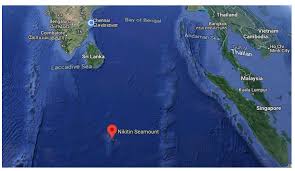
The government recently signed a contract with the International Seabed Authority to explore polymetallic sulphur nodules in the Carlsberg Ridge.
- Carlsberg Ridge is a mid-oceanic ridge (a divergent plate boundary) located in the Indian Ocean.
- The ridge extends from the triple junction of the African, Indian, and Australian tectonic plates (where it connects to the Mid-Indian Ridge) northwest to the Gulf of Aden.
- The ridge separates the Arabian Sea to the northeast from the Somali Basin to the southwest.
- It marks the boundary between the Somali Plate and the Indian Plate.
- The mean depth of the Carlsberg Ridge is between some 6,000 and 12,000 feet (1,800 and 3,600 meters) below the sea surface, and it rises to a mean elevation of about 7,000 feet (2,100 meters) above the seafloor.
- The ridge turns westward around the island of Socotra and eventually connects with the East African Rift System by way of the Gulf of Aden.
- It is the most prominent mid-ocean ridge segment of the western Indian Ocean, which contains a number of earthquake epicenters.
Red Fort : Pollution
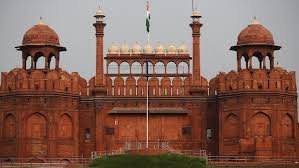
A ‘black crust’ is forming on the walls of the Red Fort due to high levels of air pollution, a recent study has found.
- The Red Fort, or Lal Qila, is a Mughal fort located in Delhi, India.
- Formerly known as Quila-e-Mubarak, or the Blessed Fort, the Red Fort lies along the banks of the river Yamuna, whose waters fed the moats surrounding the fort.
- It was built as the palace fort of Shahjahanabad – the new capital of the fifth Mughal Emperor of India, Shah Jahan.
- Shah Jahan constructed it in 1639. It was designed by architects Ustad Ahmad Lahauri and Ustad Hamid.
- Named for its massive enclosing walls of red sandstone, it is adjacent to an older fort, the Salimgarh, built by Islam Shah Suri in 1546, with which it forms the Red Fort Complex.
- The fort complex served as the residence of Mughal Emperors for nearly 200 years, until 1857.
- The fort was designated a UNESCO World Heritage site in 2007.
- From the fort each year on Independence Day (August 15), the Indian prime minister participates in a flag-raising ceremony and delivers a televised address to the country.
Nankana Sahib:

Political parties and Sikh bodies recently urged the Centre to reconsider its decision asking State governments not to process applications for pilgrimage to Nankana Sahib in Pakistan on the occasion of the birth anniversary of Guru Nanak Dev.
- Nankana Sahib is a city located in the Punjab province of Pakistan, which is historically significant to the Sikh community.
- It is the birthplace of Guru Nanak, the founder of the Sikh religion.
- Formerly known as Rai-Bhoi-Di Talwandi, Rai Bhullar Bhatti (grandson of Talwandi founder Rai Bhoi) renamed it Nankana Sahib in honor of Guru Nanak Sahib’s birth.
- Guru Nanak Dev Ji spent his early years in Nankana Sahib, and from here began his divine calling and spiritual journey.
- It is where Gurdwara Janam Asthan (also called Nankana Sahib Gurdwara) is located.
- The shrine is built over the site where Guru Nanak was believed to be born in 1469.
- It was constructed by Maharaja Ranjit Singh after he visited Nankana Sahib in 1818-19 while returning from the Battle of Multan.
- Besides Gurdwara Janam Asthan, Nankana Sahib has several important shrines, including Gurdwara Patti Sahib, Gurdwara Bal Leela, Gurdwara Mal Ji Sahib, Gurdwara Kiara Sahib, and Gurdwara Tambu Sahib—all dedicated to stages in the life of the first Guru.
- There is also a Gurdwara in memory of Guru Arjan (5th Guru) and Guru Hargobind (6th Guru). Guru Hargobind is believed to have paid homage to the town in 1621-22.
Red Coral Kukri Snake:
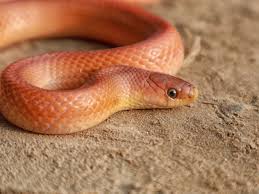
A rare Red Coral Kukri Snake species, last reported in 1936, was recently found trapped in a net in a village field near Pilibhit Tiger Reserve.
- Red Coral Kukri Snake is identified as Oligodon kheriensis.
- It is one of the rarest non venomous snake species.
- This nocturnal and fossorial snake is specialized with curved teeth like kukri (Nepalian Knife). Hence, they are called “Kukri”.
- Its whole body including the head is uniform bright coral-red without any patterns and the underside is yellowish or pinkish hence it is one of the most distinct snakes of its range.
- Its head is short, not broader than the neck and bears an obtusely pointed snout.
- It is widely distributed in lowlands (below 1500ft) of Himalayan foothills from Uttrakhand, Nepal, northern parts of Uttar Pradesh, Bihar and West Bengal to Sikkim and western Assam.
- Conservation Status
- IUCN: Least Concern (LC)
- Wild Life Protection Act: Schedule –IV
Portable Ion Chromatograph:

A team of scientists from the University of Tasmania has developed a portable ion chromatograph, Aquamonitrix, that allows real-time, on-site detection of nitrate and nitrite levels.
- It Is a compact, low-pressure ion chromatograph that can separate and detect anions (like nitrate and nitrite) in real-time, outside traditional laboratory settings.
- Developed By University of Tasmania researchers in collaboration with Aquamonitrix, a company specializing in field-deployable ion analysis instruments.
- It Works:
- Sample Prep: Soil pore water is extracted with a portable vacuum pump and filtered on-site.
- Separation: The device uses a short chromatographic column and sodium chloride solution as a carrier.
- Detection: Equipped with a UV absorbance detector, it produces two clear peaks for nitrate and nitrite without interference from other anions.
- Power: Runs on battery, enabling field portability.
Major U.S.-Led Military Exercises Around India:

Bangladesh and the United States will conduct three joint exercises (Tiger Lightning, Tiger Shark, Pacific Angel) and launch the RQ-21 UAS program in 2025 to enhance interoperability and regional security.
Exercise Tiger Lightning 2025:
- Host: Bangladesh
- Participants: Bangladesh Army and U.S. Army Pacific
- Aim: Improve readiness for counter-terrorism, peacekeeping operations, jungle warfare, and medical evacuation.
- Focus on counter-K training and rescue drills.
Exercise Tiger Shark 2025 (Flash Bengal Series):
- Host: Bangladesh
- Participants: Bangladesh Special Warfare Diving and Salvage Unit, Para Commando Brigade, U.S. Special Forces
- Aim: Strengthen maritime security operations and special operations readiness.
- Key Features:Training in patrol boat handling and small-arms marksmanship, Use of U.S. equipment to improve interoperability in crisis response.
Exercise Pacific Angel 2025:
- Host: Bangladesh (4th iteration) and Sri Lanka (largest regional event in 2025)
- Participants: U.S. Pacific Air Forces, Bangladesh Air Force, Sri Lanka Air Force, Royal Australian Air Force, Japan Air Self-Defense Force, Maldives Defence Force
- Aim: Enhance disaster response, humanitarian assistance, and aeromedical evacuation capability.
- Key Features: C-130 aircraft airdrop training and air mobility drills, Search & Rescue (SAR), jungle survival, and mass casualty response exercises, Strengthens multi-nation interoperability for regional HADR.
RQ-21 Blackjack UAS Program Launch:
- Location: Bangladesh
- Partners: U.S. Army & Navy with Bangladesh Army/Navy
- Aim: Build indigenous unmanned aerial surveillance capability.
Exercise Yudh Abhyas 2025:
The 21st edition of Exercise Yudh Abhyas 2025 was held at Fort Wainwright, Alaska, aiming to enhance interoperability, readiness, and cooperation between the Indian and US armies.Started in 2004 as counterinsurgency training; evolved to include conventional, unconventional, hybrid threats, and peacekeeping operations.Joint military exercise to enhance bilateral readiness, interoperability, brigade-battalion coordination, air-to-ground integration, and support a free and open Indo-Pacific strategy.Alaska offers Arctic and Indo-Pacific operational experience; Indian forces gain cold-weather training alongside US Arctic-experienced troops.Part of the US-India Major Defense Partnership, including joint exercises, defense trade, and personnel exchanges to enhance combined capabilities.
Exercise Pacific Reach 2025:
Indian Navy’s latest indigenously designed and constructed Diving Support Vessel (DSV) INS Nistar is participating in Exercise Pacific Reach 2025 in Singapore.It is a multinational conducted in Singapore. It is a biennial exercise which will witness participation of more than 40 nations.
The exercise is mainly conducted in two phases, including the harbour and sea phases. The harbour phase will involve in-depth discussions on submarine rescue systems, Subject Matter Expert Exchanges (SMEE), a medical symposium and cross-deck visits between the participating nations.
The Sea phase of the exercise would witness INS Nistar and Submarine Rescue Unit (E) engaging in multiple intervention and rescue operations with participating assets in the South China Sea.
Swasth Nari, Sashakt Parivar Abhiyaan:
The Prime Minister launched the Swasth Nari, Sashakt Parivar Abhiyaan (SNSPA) and the 8th Rashtriya Poshan Maah. Swasth Nari, Sashakt Parivar Abhiyaan aims to strengthen healthcare for women and children in India, promoting access, quality care, and awareness, with active participation from private hospitals under a Jan Bhagidaari Abhiyaan model. It is a landmark health initiative by the Ministry of Health and Family Welfare and the Ministry of Women and Child Development.SNPSA will deploy more than one lakh health camps across Ayushman Arogya Mandirs and Community Health Centres to ensure comprehensive screenings for women’s health issues like anaemia, hypertension, diabetes, and cancer. The SASHAKT portal will track progress in real-time, ensuring transparency and efficient implementation. SNPSA encourages community participation through Nikshay Mitras and volunteer support, especially in tribal and rural areas. Promotes awareness on menstrual hygiene, nutrition, and wellness through education at Anganwadis and health camps
Moran Community : In News
The Moran community in Assam’s Tinsukia district—an area rich in oil, coal, and tea—has launched an economic blockade, stopping the movement of goods to and from the region to press their demand for Scheduled Tribe (ST) status.The Moran community is an aboriginal tribe of Assam that once had an independent kingdom before the Ahom rule.In the 17th century, Aniruddhadeva converted them to Vaishnavism, sparking cultural and social regeneration. They belong to the Moamoria sect of Vaishnavism and have a small population in Arunachal Pradesh’s Namsai district.The Morans are one of the six communities—along with Tea Tribes/Adivasis, Motok, Tai Ahom, Chutia, and Koch-Rajbongshi—that are agitating for ST status.
Annual Licensing Policy for Opium Cultivation for 2025-26:
The Union Government has announced the annual licensing policy for opium poppy cultivation in Madhya Pradesh, Rajasthan, and Uttar Pradesh for 2025-26, increasing eligible farmers to 1.21 lakh.The opium poppy (Papaver somniferum L.) is an annual medicinal herb belonging to the Papaveraceae family. It is the primary source of opium gum, which contains alkaloids like morphine, codeine, and thebaine, widely used in modern medicine as painkillers, cough suppressants, and antispasmodics. Apart from medicinal use, it is also grown for edible seeds and seed oil.Opium Cultivation in India is the only country authorized by the United Nations Single Convention on Narcotic Drugs (1961) to produce gum opium. 11 other countries cultivate opium poppy, but they do not extract gum. Opium poppy has been cultivated in India since the 10th century. It became a federal monopoly during the Mughal period in the 16th century, came under British control from 1773, and is now regulated by the Indian government.
WHO has added GLP-1 receptor agonists to its Model List of Essential Medicines (EML) for type-2 diabetes:
The WHO has added GLP-1 receptor agonists (semaglutide, dulaglutide, liraglutide, tirzepatide) to its Model List of Essential Medicines (EML) for type-2 diabetes with comorbidities like obesity and cardiovascular/kidney disease.Glucagon-Like Peptide-1 (GLP-1) drugs are medications that mimic the action of the natural GLP-1 hormone. They belong to the class of GLP-1 receptor agonists (also called incretin mimetics). Aimis to Lower blood glucose in type-2 diabetes patients, to Support weight loss, improve cardio-metabolic health, and reduce diabetes complications (heart/kidney).
Operation Weed Out:
The Directorate of Revenue Intelligence (DRI) has seized 108.67 kg of hydroponic weed in less than 20 days under its ongoing “Operation Weed Out” across India. Operation Weed Out is nationwide anti-drug enforcement drive targeting trafficking syndicates smuggling hydroponic cannabis into India.
Launched By: Directorate of Revenue Intelligence (DRI) under the Central Board of Indirect Taxes and Customs (CBIC), Ministry of Finance.




